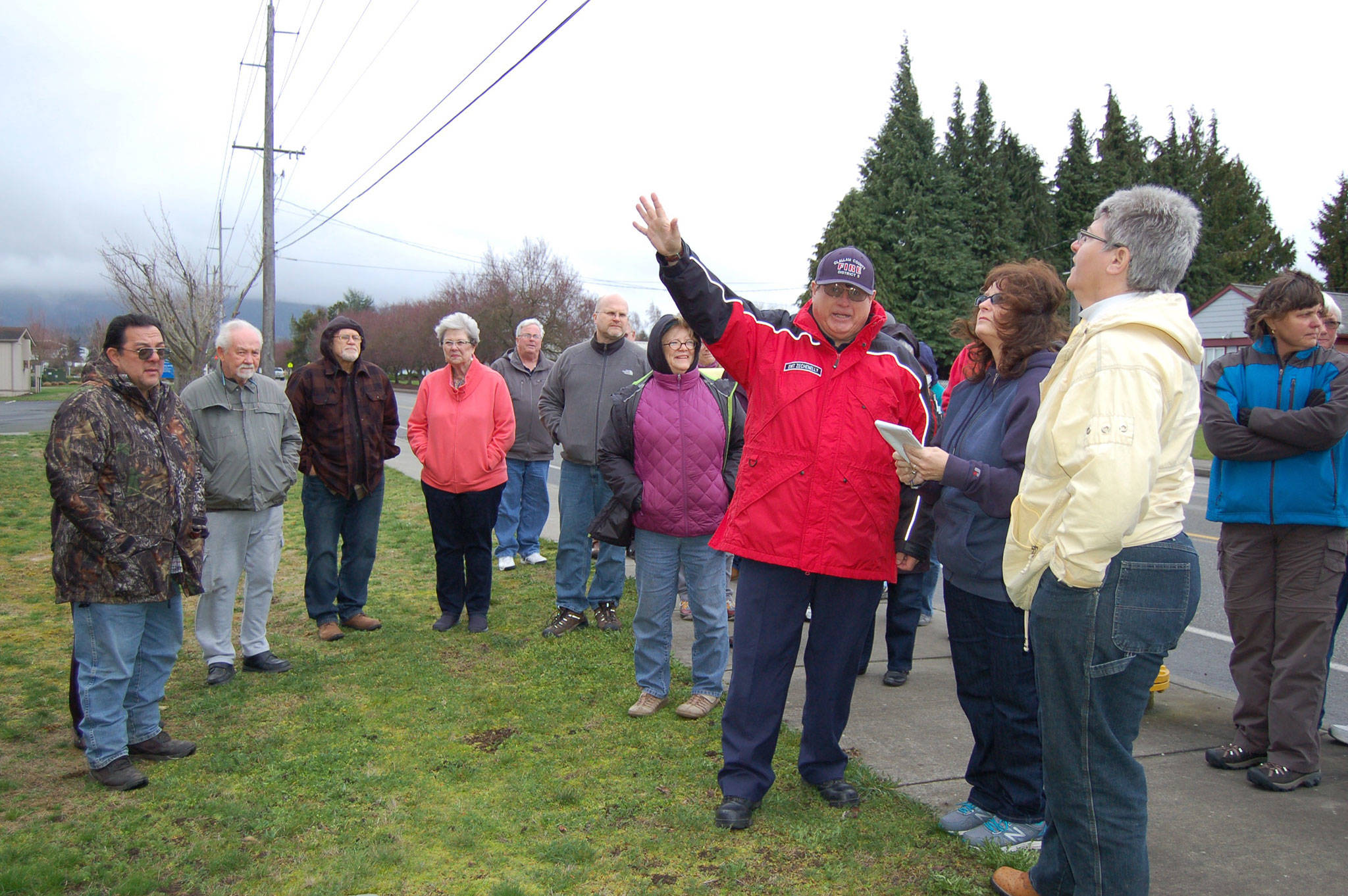For the past year, Clallam County Fire District 3 has reached out to faith-based communities and Sequim residents in order to get the word out about emergency preparedness.
Clallam County Fire District 3 Assistant Chief Dan Orr said his job is to make sure Sequim is prepared to survive and thrive on its own for 30 days as a worst case scenario to an event such as Cascadia Rising, an earthquake that could reach a seismic magnitude of 9.0 followed by a tsunami expected to hit the Olympic Peninsula because of shifting plates in the Cascadia Subduction Zone.
Orr — also known as “Chief Doom” after giving several emergency preparedness talks — is in charge of community risk reduction and long-range planning for Fire District 3. It is his job to put together a plan for a large scale natural disaster and decided faith-based communities were a great place to start.
“Our big piece is we need to get the word out, that’s where faith-based (groups) came in,” Orr said.
He explained most people do not realize the potential there is for a natural disaster of this size and that the county could be isolated from resources and supplies for a long period of time.
“FEMA told everybody three days, the state of Washington tells everyone 14 days, the fire department is telling everyone 30 days because of how isolated the county would be,” Orr stated.
Fire District 3 covers 142 square miles from Gardiner to Deer Park Road. In light of a large scale natural disaster, Orr said there are not enough emergency responders to be able to cover 35,000 structures and 72,000 people in Clallam County.
“I need a force multiplier, I need to actively engage the citizens of the community and get them involved in this because they are the ones who are going to make a difference,” Orr said.
Orr has given several emergency preparedness talks to faith-based groups in Sequim, such as Sequim Community Church, that have now actively become a part of the emergency preparedness initiative.
“It’s not something you start off deciding you’re going to do, it grows on you,” said Charlie Meyer, a member of Sequim Community Church and head coordinator for the emergency preparedness initiative at his congregation.
Meyer said once you start to study the problem, such as the damage that could be done by Cascadia Rising, there is a real need to be prepared.
“We’re practicing what we’re preaching,” he said.
Meyer explained he became a leader of this initiative because one of his responsibilities in adult discipleship is helping those in his faith grow by being of service to them. He said this initiative is one way he can be of service to both his congregation and emergency responders.
He describes emergency preparedness as, “a complicated business; it’s not just a few extra cans on the shelf,” Meyer said. “We’re trying to think these things through so we can take them back to our churches.”
According to Meyer, members of Sequim Community Church have attended monthly meetings with Fire District 3 to learn about emergency preparedness techniques, such as water purification, food preservation and sanitation.
The group also has identified where all its members live in 20 neighborhoods throughout Sequim through a county program called Map Your Neighborhood. This program has allowed the church to develop points of contact persons in each of the 20 neighborhoods as well as establish deacons that provide pastoral care.
The church also hosts eight-hour Community Emergency Response Team (CERT) training sessions for residential groups that want to take emergency preparedness a step further.
Orr said Fire District 3 is hoping to create 20 CERT teams throughout its regional boundaries. Currently, there are at least six to seven trained CERT teams that meet monthly with Fire District 3. These teams are groups of local support professionals trained through the fire department that can help emergency responders with operations like light search and rescue in the event of a natural disaster.
There are 12 faith-based groups involved in the emergency preparedness initiative, some of which include Dungeness Community Church, Church of Jesus Christ of Latter Day Saints, Sequim Seventh-day Adventist Church and more.
Next month, a member of the Church of Jesus Christ of Latter Day Saints is going to show how to build No. 10 cans and can rice and beans. Orr said in September there also will be a class held by a representative of the Department of Homeland Security centered around faith-based communities.
“We hope to keep (this initiative) going indefinitely,” Orr said. “This is a great way of going out and touching a piece of the community.”
Orr said the best way to be prepared for a large scale natural disaster is take self-responsibility and be prepared to survive for 30 days with supplies such as food, water and medicine.
Learn more about emergency preparedness at sequimcommunitychurch.org/eprep/.



